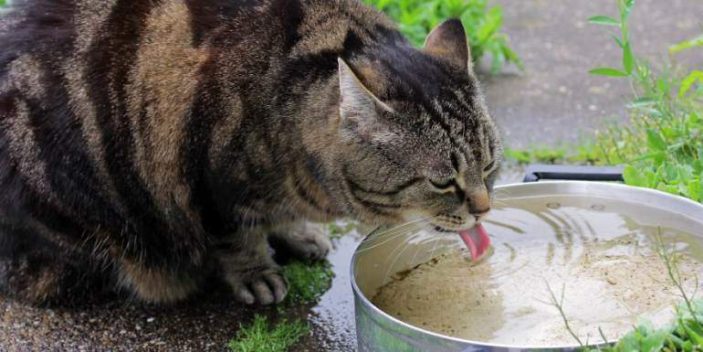Sodium (Na) is a highly reactive, silvery-white element. This alkali metal is one of the major cationic (positively charged ion) electrolyte found in a cat’s intracellular and extracellular fluids, with some of it is found in their skeleton.
In its ionized form (Na+), it is the most abundant cation and combining it with chloride forms of sodium chloride or table salt.
Finally, its concentration in a cat’s body is kept within a guarded limit of about 155 mEq/l and a deficiency or excess amounts will result in some symptoms
Functions
- It helps maintain normal body fluid balance, electrolyte concentration and therefore regulates osmotic pressure between intracellular and extracellular body fluids.
- Also, it regulated blood pressure and volume as well as water volume in the body.
- As an electrolyte, it maintains the ionic balance between extracellular and intracellular fluids and helps in electrical signal transmission necessary for normal muscle and nerve function including the brain and nervous system.
- It “aids in the transfer of nutrients to cells and the removal of waste products,” notes PetCoach
- It helps in maintaining acid-base balance (pH)
Sources
It is naturally found in poultry, fish, meat, eggs but often added to commercial cat foods as table salt to ensure it meets the required amount as well as make these foods more palatable.

Homeostasis
Sodium is obtained from various dietary sources including to those that it has been added. Its absorption occurs in the ileum (distal small intestine) and colon.
Its balance closely related to the amount of water in the body, the amount of intestinal absorption and regulation by kidneys. There are also small amounts are lost with feces.
In the kidney, sodium is filtered at the glomeruli, after which some will be reabsorbed while excess amounts will be excreted through urine (natriuresis). The process is regulated by the renin-angiotensin-aldosterone system.
Hyponatremia or sodium deficiency in cats
Feline hyponatremia is a condition characterized by a low concentration of sodium in blood plasma and it often occurs alongside hypoosmolality characterized by protein, nutrients, and electrolytes going below normal levels.
It can occur due to sodium (solute) loss or water retention often noted in case of kidney problems and it will have symptoms such as lethargy, weakness, confusion, seizures, dullness, vomiting, nausea, coma as well as those associated with the exact underlying cause.
Hyponatremia may also cause anorexia, weight loss, reduced sodium excretion, and a lower specific urinary gravity.
Hypernatremia
It is the exact opposite of hyponatremia and occurs when there is an abnormally high sodium level in cat’s blood.
Symptoms of hypernatremia in cats include thirst and drinking of water, disorientation or confusion, seizures, coma, among others.
It can be due to vomiting, diarrhea, low water intake, an intravenous fluid that has sodium chloride, salt poisoning, a chronic kidney disease which can make the body to retain this cation or excessive water loss in urine common in diabetic cats.
In the case of hypernatremia, emergency treatment is often recommended as it can have severe health effects on your feline friend. You may also be required to go for low sodium cat foods.
How much do cats need?
According to AAFCO (2014), all cat classes (growing, expectant or adult maintenance require a minimum of 0.2% sodium based on food dry matter or 0.5g per Units per 1000 kcal ME. There are no maximum recommended amounts in healthy cats.
The National Research Council recommends a minimum amount of 42 mg as the amount required for an adult cat that consumes 250 calories and weighs about 9 pounds.
Finally, the European Pet Food Industry Federation (FEDIAF 2018) recommends 0.40g for growth and reproduction per 100g of their food based on dry matter basis or 0.10g for adult maintenance for energy requirements of 75 kcal/kg0.67 and 0.8g for adult maintenance energy requirements of 100 kcal/kg0.67 per 100g cat food on dry matter basis.
However, excessive ingestion this mineral often common salt (NaCl) (in solid or solution form) can lead to sodium poisoning as it causes hypernatremia. However, hypernatremia has other causes too.
